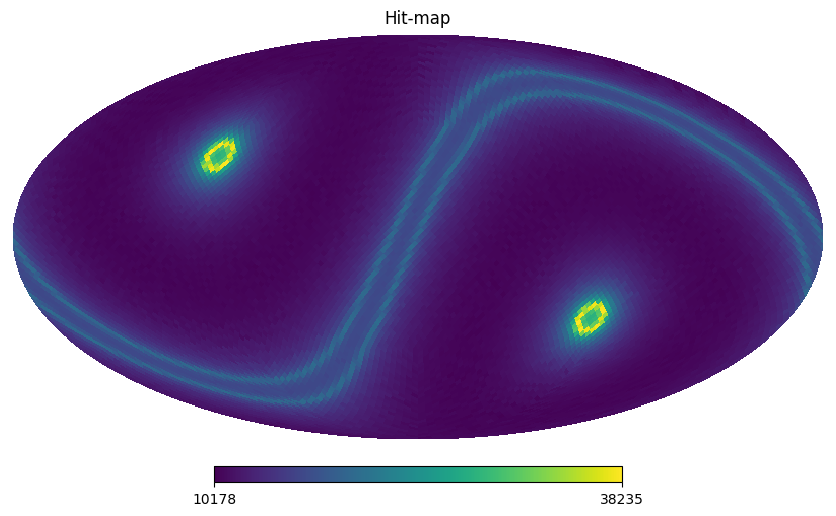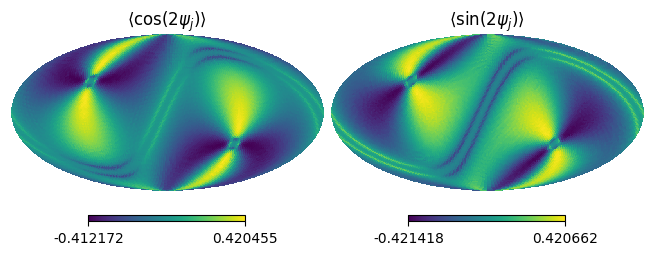ScanFields#
After installting a cross-link databese saved in HDF5 format, we can load every infomation related with scanning strategy such as a hit-map and cross-link map.
This information will be an object by sbm.ScanFields class. The following code snippet shows how to access the hit-map and cross-link map.
Hit-map#
This is a code sample to access the hit-map:
import numpy as np
import healpy as hp
import matplotlib.pyplot as plt
import sbm
from sbm import ScanFields
test_xlink_path = "sbm/tests/nside_32_boresight_hwp.h5"
sf_test = sbm.read_scanfiled(test_xlink_path)
hp.mollview(sf_test.hitmap, title="Hit-map")
display(sf_test.ss)

{'alpha': 45.0,
'beta': 50.0,
'coord': b'G',
'duration': 31536000,
'gamma': 0.0,
'hwp_rpm': 61.0,
'name': array([b'boresight'], dtype=object),
'nside': 32,
'prec_rpm': 0.005198910308399359,
'sampling_rate': 5.0,
'spin_rpm': 0.05,
'start_angle': 0.0,
'start_point': b'equator'}
Cross-link#
Also, we can access the cross-link map as follows:
xlink2 = sf_test.get_xlink(2, 0) # n=2, m=0
hp.mollview(xlink2.real, title=r"$\langle \cos(2\psi_j) \rangle$", sub=(1,2,1))
hp.mollview(xlink2.imag, title=r"$\langle \sin(2\psi_j) \rangle$", sub=(1,2,2))

If we want to have a cross-link simulated by orthogonal pair detector, we can use ScanFields.t2b().
This method apply the exponential factor to rotate the phase of detector as:
xlink2 = sf_test.t2b().get_xlink(2, 0) # n=2, m=0
hp.mollview(xlink2.real, title=r"$\langle \cos(2\psi_j) \rangle$", sub=(1,2,1))
hp.mollview(xlink2.imag, title=r"$\langle \sin(2\psi_j) \rangle$", sub=(1,2,2))

Covariance matrix#
By combining cross-links using ScanFields.create_covmat(), we can create covariance matrix to reconstruct signals.
For instance, if we want to reconstruct the spin-0 and spin-2 field, we can use the following code snippet:
spin_n_basis = [0, 2, -2] # spin-n
spin_m_basis = [0, 0, 0] # spin-m
C = sf_test.create_covmat(spin_n_basis, spin_m_basis)
C is a \(3\times3\times N_{\rm pix}\) numpy.ndarray though we can see the analytical covariance matrix \(C\) by
display(sf_test.model_covmat())
Output: